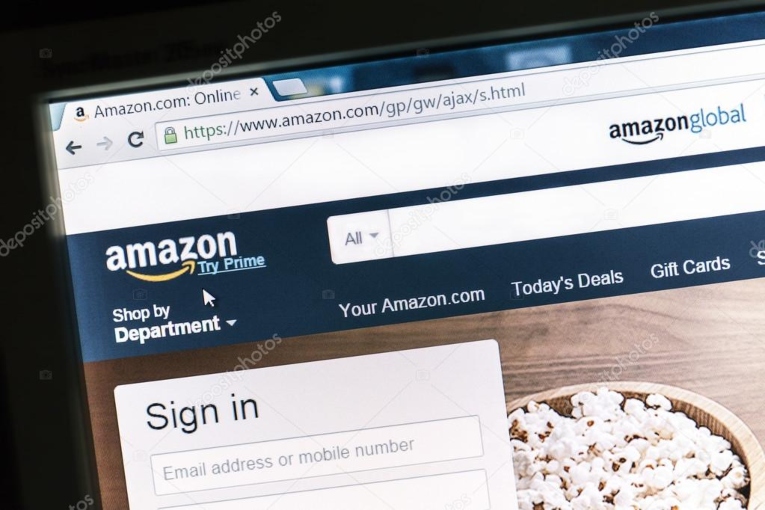
Retail arbitrage is when unauthorized resellers purchase products from online or brick-and-mortar retailers, and then resell them on Amazon. And it can happen to any Amazon seller, including you.
Secured a significant retail distribution deal? Great, but be careful not to mishandle it. Doing so can lose you the Buy Box, decrease revenue, and waste your media by giving sales to your listings’ hijackers.
Successful in the retail space and want to grow your business on Amazon? Love your mindset, but have unauthorized resellers already beat you to it?
Certain proactive measures help protect your product listings’ integrity by preventing unauthorized sellers from piggybacking off your success. In this blog we detail effective strategies that can help you combat them.

About unauthorized resellers
Who are they?
Countless entrepreneurs and established businesses profit from Amazon via retail arbitrage. They learn Amazon sales tactics on YouTube and TikTok, where videos teach them how to source products and master Amazon Seller Central, and accidentally inspire their disruptive practices.
Where do they purchase inventory?
They shop for inventory at wholesale clubs like Costco or off-price retailers like TJ Maxx. Businesses like those are major inventory sources because their discounted pricing allows unauthorized resellers to profit on Amazon.
How do they identify which products to resell?
Unauthorized resellers can determine which products are worth reselling by scanning barcodes in-store. If a product listed at $70 in-store and $135 on Amazon, it’s primed for unauthorized resellers to exploit. Especially if its Amazon listing meets an unauthorized reseller’s qualifications:
• Established sales history
• Optimized listing, e.g. A+ content
• Good review quantity and star rating
• Active Amazon ads
Unauthorized sellers look for listings that check these boxes because they help ensure a product will sell with minimal effort. These unauthorized resellers aren’t interested in paying for ads or building content. Instead, to secure the Buy Box, they offer a lower price and profit thanks to the ad traffic the brand (in this case, potentially you) pays for.

4 Strategies to prevent unauthorized piggybacking
You can prevent unauthorized resellers from piggybacking your listings by deploying the following strategies, which may force them to look elsewhere.
1) Implement pricing differentials
Setting a minimum price or MAP for your products in retail stores deters unauthorized resellers on Amazon. By narrowing their potential profit margin, you diminish their incentive.
Let’s say your product costs $80 in-store. An unauthorized reseller would need to sell it for at least $96 on Amazon to secure any profit at all. When you implement pricing differentials, you create other challenges for unauthorized resellers, like how their shipping costs eat up margin. Removing or reducing any potential margin reduces the potential of resellers, and forces them to look elsewhere.
2) Incorporate time-limited sale pricing
Rather than maintaining full-price on Amazon, introducing time-limited sale pricing – a deal only available for a designated amount of time while your retail distribution lasts – for your Amazon inventory can bolster your protection against unauthorized resellers. This dynamic pricing strategy makes it difficult for resellers to predict and exploit consistent pricing differentials.
Incorporating time-limited sale pricing also helps ensure Amazon doesn’t enforce permanent pricing, which is always a risk if it learns your pricing is lower elsewhere (Amazon believes it should be the equally cheapest option available).
3) Distinctive labeling or Amazon-specific packaging
Modifying or creating different product packaging and/or labels distinguishes your products sold on Amazon from ones sold in-store, creating an impression of a different product altogether. This modification can turn off unauthorized resellers looking to profit from your hard work.
Your Amazon inventory having different packaging and/or labels can cause Amazon to identify it and your in-store inventory as 2 separate products. This barrier can make your content, ad spend, etc., useless to unauthorized resellers, and make you more profitable.
Another bonus of this tactic is it becomes easier to explore infringement options to remove resellers listing these ‘different’ products on your ASINS.
4) Unique GTIN/UPC for retail products
Differentiating your in-store products’ GTINs from ecommerce’s and Amazon’s helps segregate the distribution channels. This is one step beyond making the products look different, as they are actually different.
This distinct identification reduces the chances of unauthorized resellers identifying your original listings through barcode scanning. They’ll be unable to scan the product’s UPC in-store and find its Amazon listing, so move onto looking for other products.
It is important to note that the products do need to be different in some way to apply for additional GTINs – for example, a different size, color, quantity, including an accessory, etc.
While not a guarantee, this can deter Amazon.com from price matching lower prices your retail partners, like Costco.com, may have. However, this does require, at the very least, printing a new label. Ideally, you can combine a slightly different product with custom labeling and/or packaging to further distinguish authorized sellers from unauthorized resellers, effectively squashing piggybacking as a possibility.
Other, more sinister, sources of competition
Some sellers suffer from counterfeiters, who sell fake products and steal the Buy Box by offering their products at a lower price. Other sellers are impacted by short-term scammers, who drop the price significantly to win the Buy Box, and proport to fulfil via FBM but who never actually send the product out. The good news is that Amazon has programs and processes to resolve both situations such as the Amazon Transparency Program and Project Zero. However, these are different topics for another day.
Arbitrate your Amazon listings on your terms
No Amazon seller is immune to retail arbitrage, but you have the power to protect the integrity of your listings and your profitability.
These strategies can significantly reduce the chances of an unauthorized reseller piggybacking your hard-earned Amazon listings. And when you deploy them simultaneously, you’ll dissuade copycats by increasing their risk.
Leaving all the profit margin where it belongs: with you.

